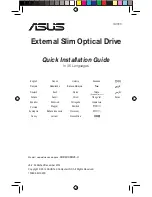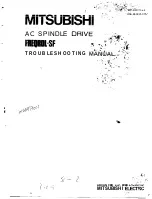
D
D
C
C
S
S
8
8
1
1
0
0
V
V
2
2
D
D
i
i
g
g
i
i
t
t
a
a
l
l
D
D
C
C
S
S
e
e
r
r
v
v
o
o
D
D
r
r
i
i
v
v
e
e
r
r
M
M
a
a
n
n
u
u
a
a
l
l
R
R
e
e
v
v
1
1
.
.
0
0
Tel: (86)755-26434369
12
Website: www.leadshine.com
System Connections and Noise Prevention
After finishing the above steps, you can connect your servo system. Before you start,
make sure that the power is off. Connect your system according to connection
diagrams before, and pay attention to the following tips when wiring.
Wire Gauge
The smaller wire diameter (lower gauge), the higher impedance. Higher impedance
wire will broadcast more noise than lower impedance wire. Therefore, when
selecting the wire gauge, it is preferable to select lower gauge (i.e. larger diameter)
wire. This recommendation becomes more critical as the cable length increases. Use
the following table to select the appropriate wire size to use in your application.
Current (A)
Minimum wire size (AWG)
10
#20
15
#18
20
#16
Cable Routing
All content sensitive signal wires should be routed as far away from motor power
wires and driver power wires as possible. Motor power and driver power wires are
major sources of noise and can easily corrupt a nearby signal. This issue becomes
increasingly important with longer motor power and driver power wires lengths.
Twisted Wires
Twisted wires effectively increasing noise immunity. The successive twists eliminate
noise transients along the length of the cable. Both signal cables and power cables
should be of the twisted and shielded type. Differential signal wires should be
twisted as a pair. The combination of twisted pair wires and a differential signal
significantly adds to noise immunity. Power wires should be twisted as a group
D
D
C
C
S
S
8
8
1
1
0
0
V
V
2
2
D
D
i
i
g
g
i
i
t
t
a
a
l
l
D
D
C
C
S
S
e
e
r
r
v
v
o
o
D
D
r
r
i
i
v
v
e
e
r
r
M
M
a
a
n
n
u
u
a
a
l
l
R
R
e
e
v
v
1
1
.
.
0
0
Tel: (86)755-26434369
13
Website: www.leadshine.com
along with the ground (or chassis) wire, if available.
Cable Shielding
All signal wires should be bundled and shielded separately from driver power and
motor power wires. Power wires should also be bundled and shielded. When
grounding a shield, the rule-of-thumb is to do so at the
‘
source
’
of power while
leaving the other shield end open. For example, in the case of motor power wires,
this would be the drive side. Ideally, twisted pairs should be individually shielded
and isolated from the outer shield, which encompasses all wires within the cable.
However, since this type of stringent shielding practice is often not required, typical
cables do not provide isolation between inner and outer shields.
System Grounding
Good grounding practices help reduce the majority of noise present in a system. All
common grounds within an isolated system should be tied to PE (protective earth)
through a
‘
SINGLE
’
low resistance point. Avoiding repetitive links to PE creating
ground loops, which are a frequent source of noise. Central point grounding should
also be applied to cable shielding; shields should be open on one end and grounded
on the other. Close attention should also be given to chassis wires. For example,
motors are typically supplied with a chassis wire. If this chassis wire is connected to
PE, but the motor chassis itself is attached to the machine frame, which is also
connected to PE, a ground loop will be created. Wires used for grounding should be
of a heavy gauge and as short as possible. Unused wiring should also be grounded
when safe to do so since wires left floating can act as large antennas, which
contribute to EMI.
Power Supply Connection
NEVER
connect power and ground in the wrong direction, because it will damage
the DCS810V2 driver. The distance between the DC power supply of the drive and










































